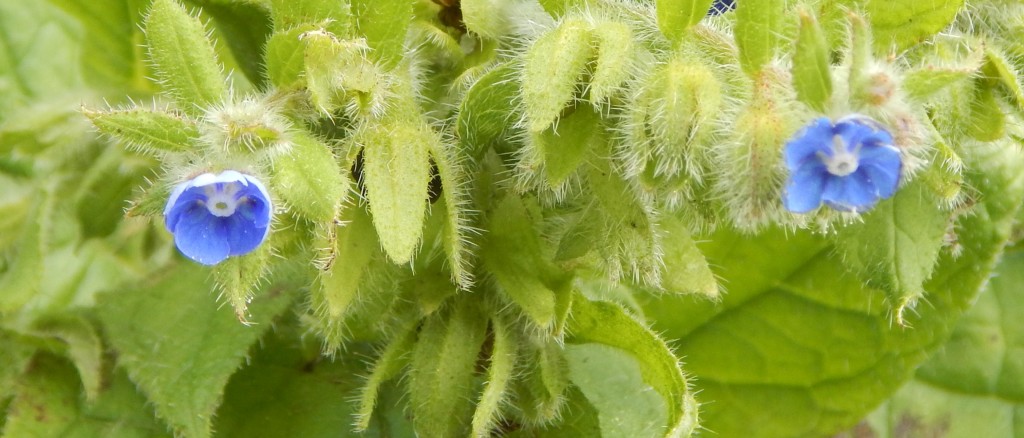
[254] Pentaglossis sempervivens, Green Alkanet
Introduction
Pentaglossis sempervivens, Green Alkanet, is a common evergreen wildflower with small, pretty blue flowers. It may also be called Evergreen Bugloss or just Alkanet.
Confusingly, several related species may be called Alkanet. Alkanna tinctoria and other species of Alkanna are Alkanet. Anchusa officinalis may be called Alkanet or Common Bugloss. Lithospermum arvense is Bastard Alkanet; Anchusa barrelieri is False Alkanet; Anchusa ochreleuca is Yellow Alkanet. All of these are from the same family as Pentaglossis.
Taxonomy
Kingdom – Plants
Division – Vascular Plants
Class – Angiosperms (Flowering Plants)
Order – Boraginales
Family – Boraginaceae
Genus – Pentaglossis
Scientific Name – Pentaglossis sempervivens
Name
Alkanet is derived via Middle English from Arabic al-hinna so is cognate with henna. The dye henna comes from an unrelated species but the species originally named as Alkanet, Alkanna tinctoria, was probably so named because of its use as a dye.
See [121] Viper’s Bugloss for the derivation of bugloss. (It’s not bug loss!)
Penta-glossis means five-tongues and semper-vivens means always-alive (evergreen.)
Description
Green Alkanet is a low-growing, spreading, evergreen perennial plant with large dark green leaves
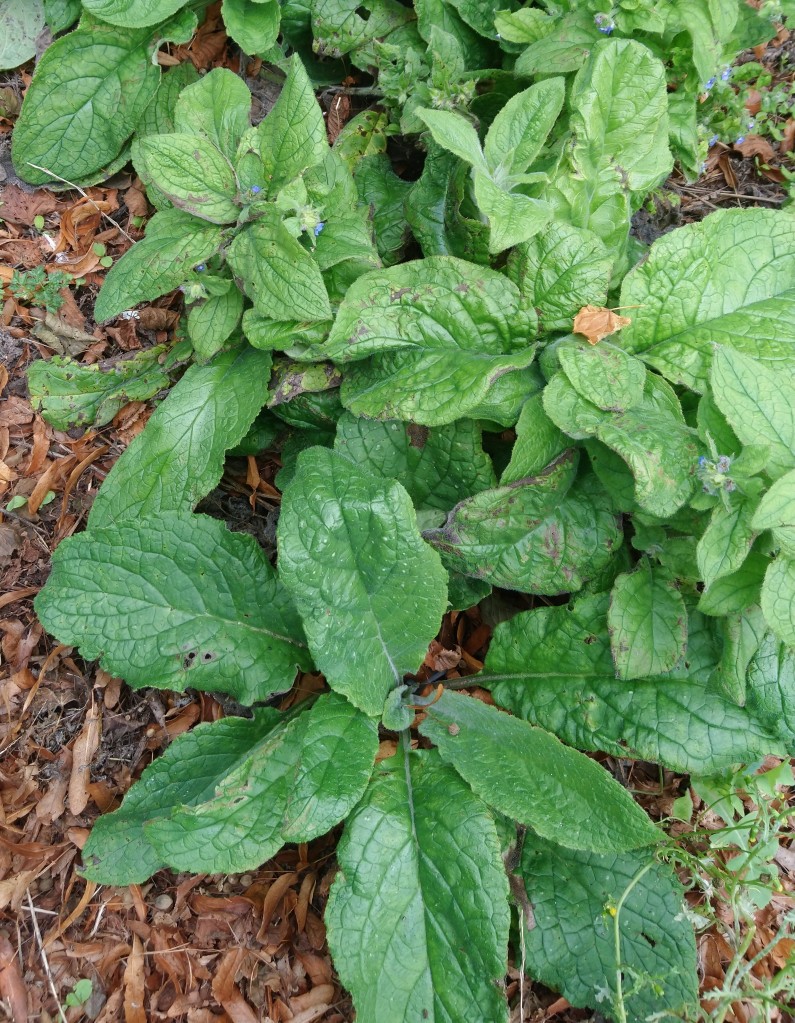
Stems, leaves and buds are hairy in appearance.
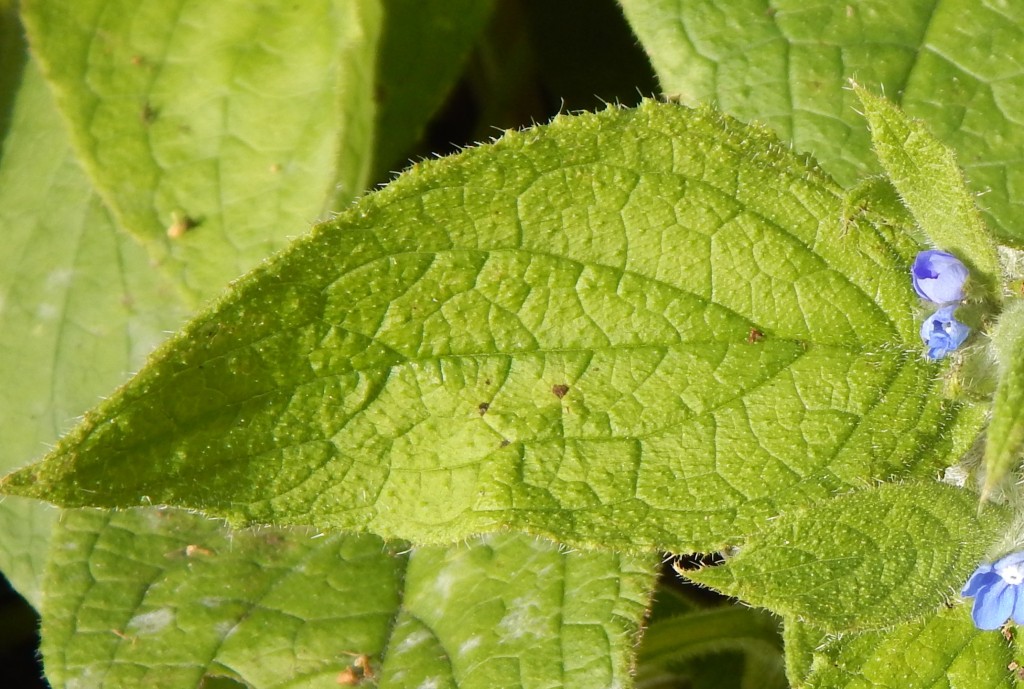
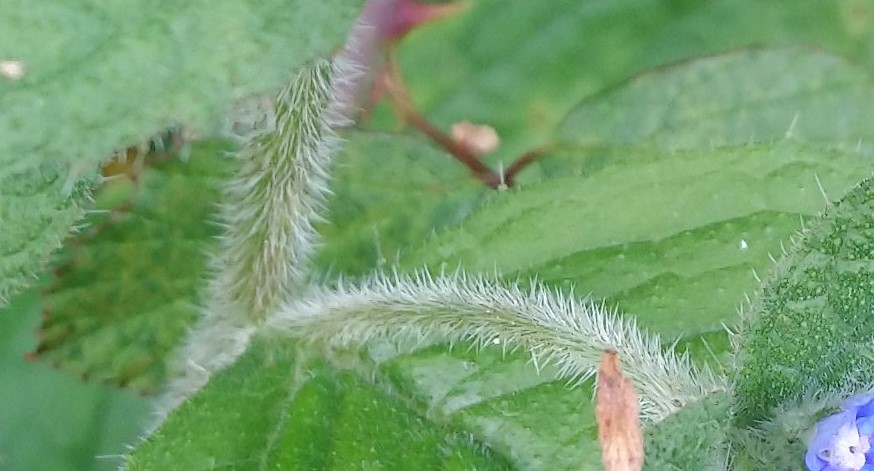

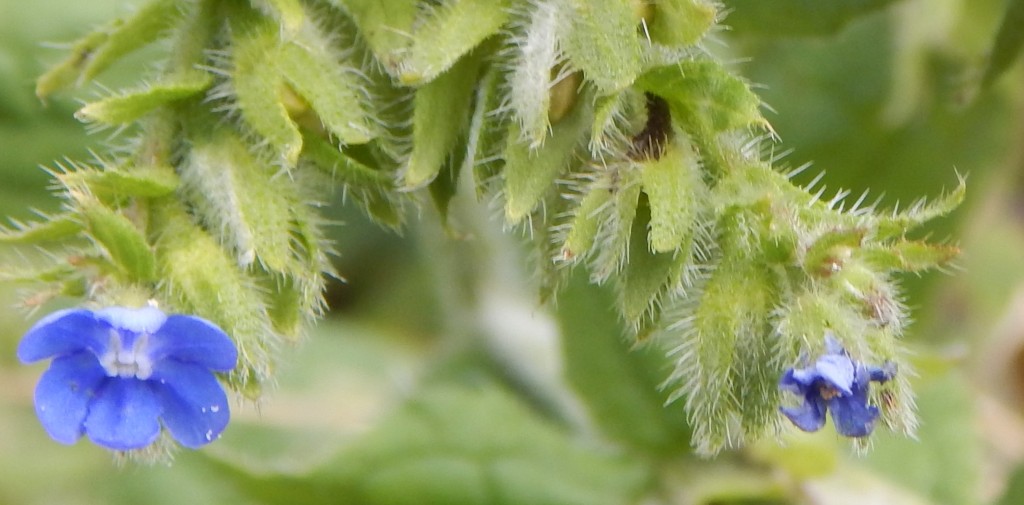

Its small blue flowers emerge in Spring and early Summer.
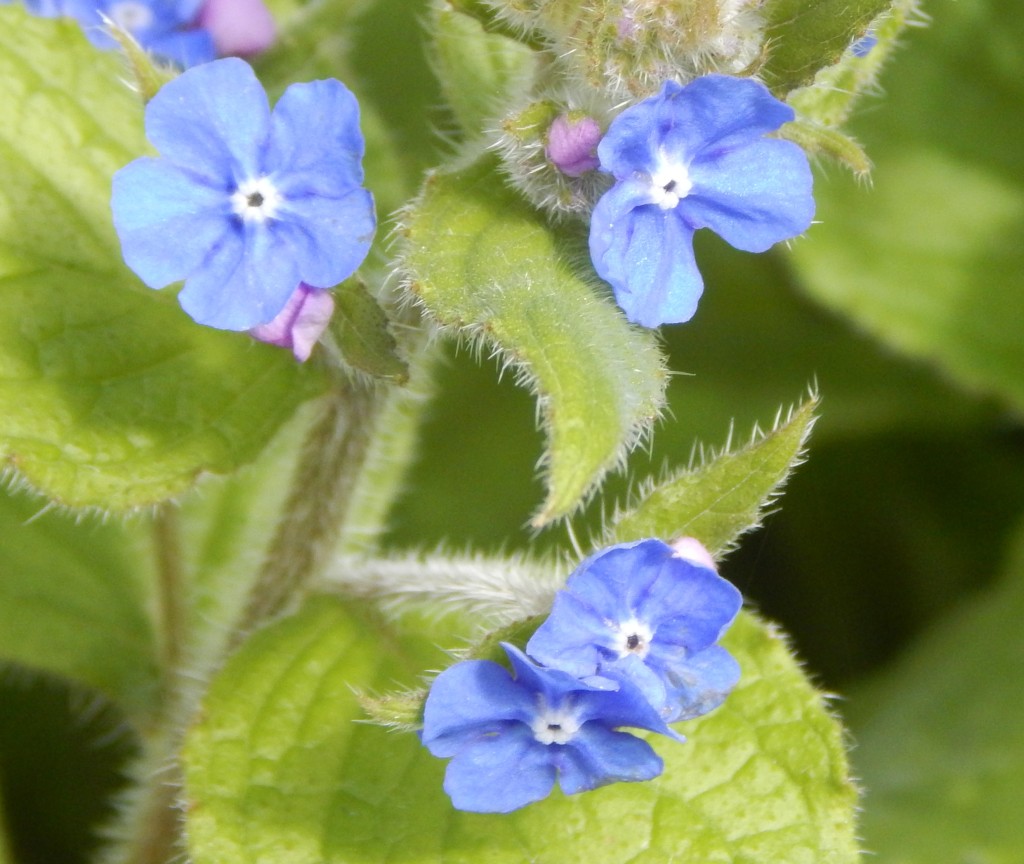

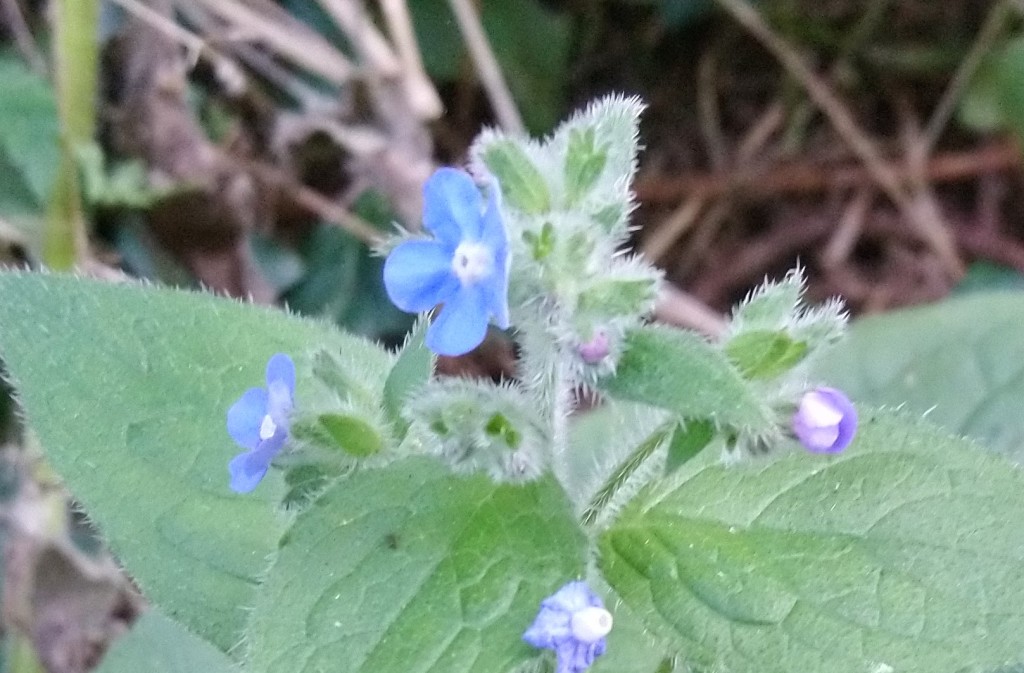
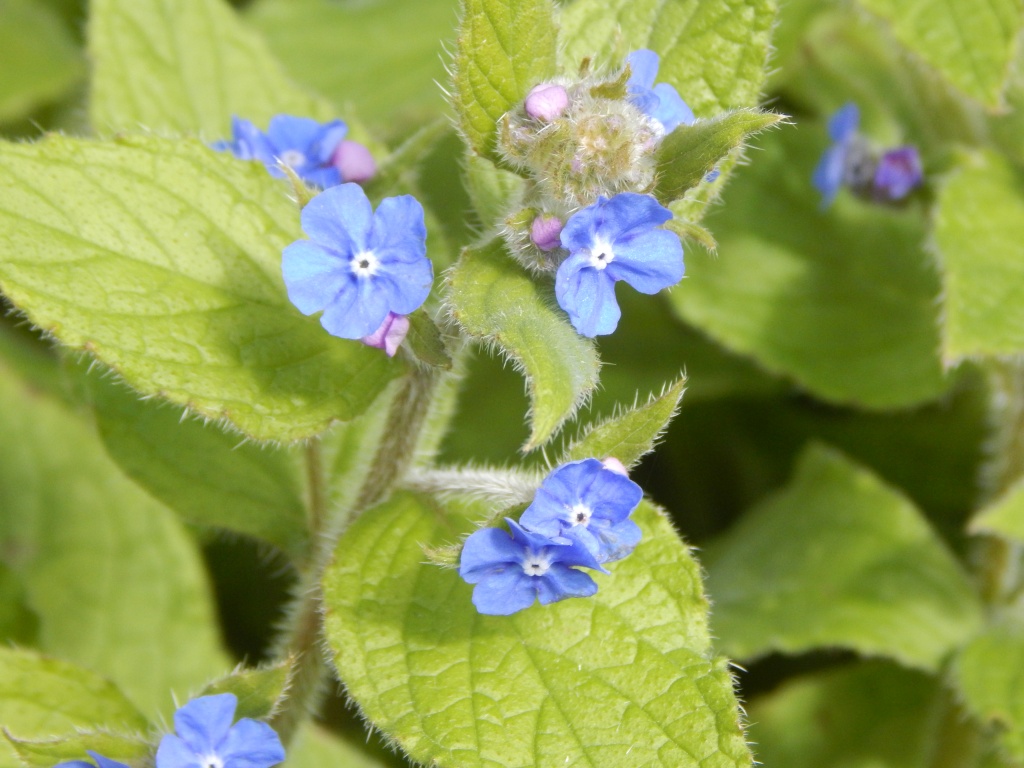
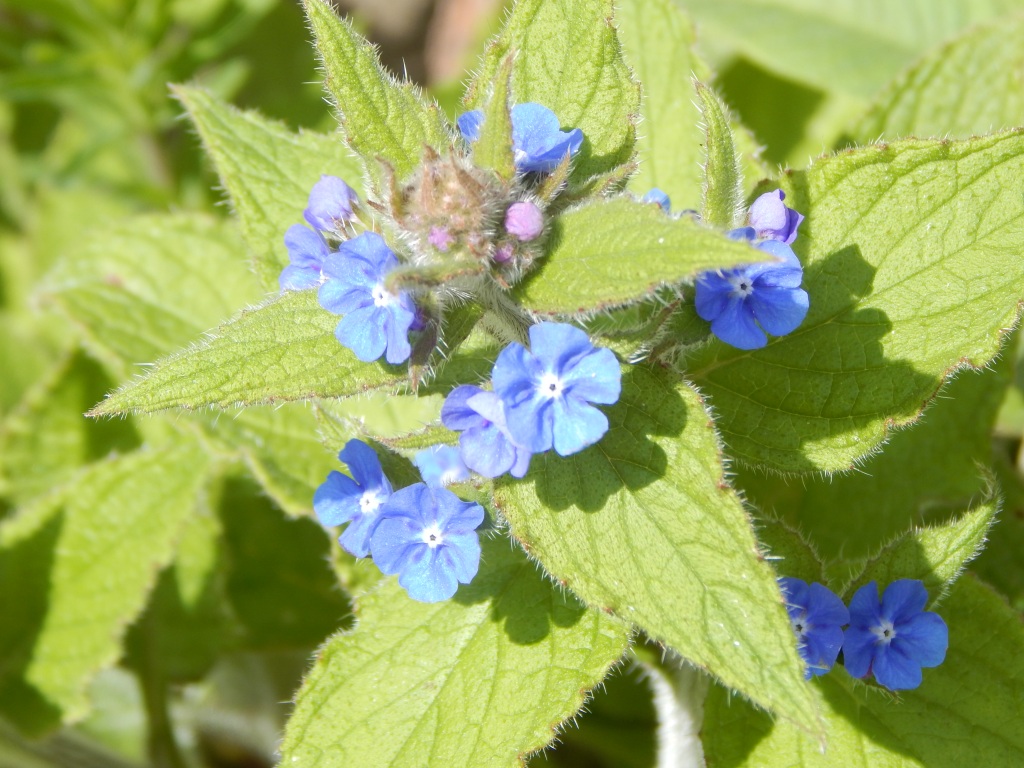
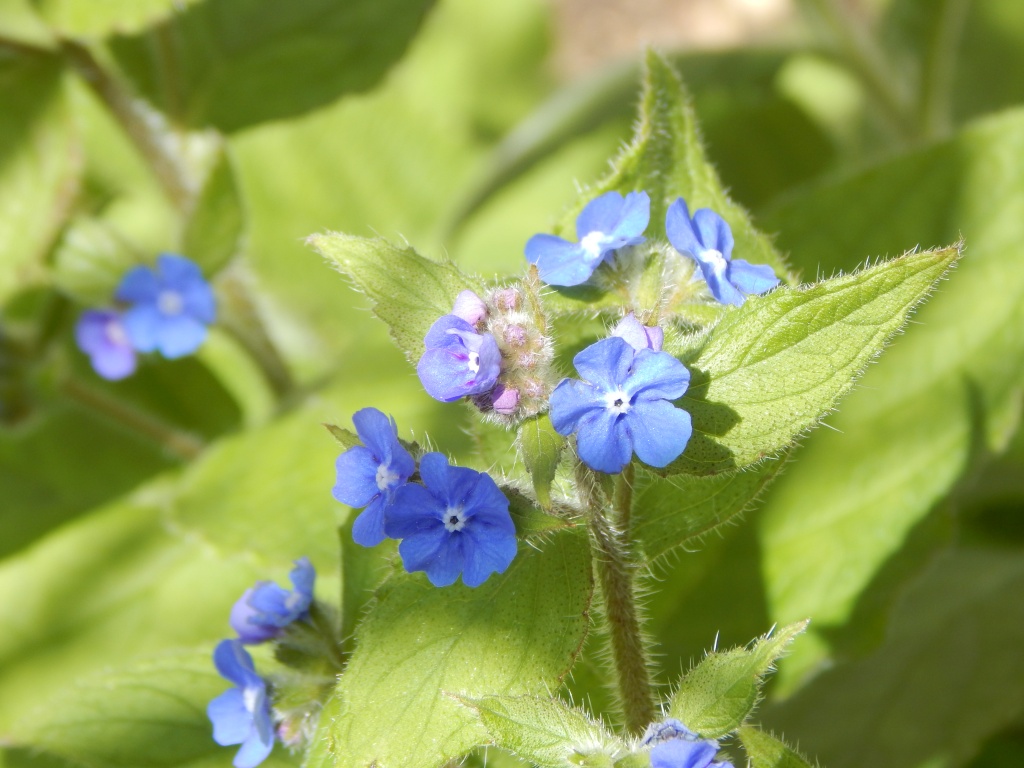
Habitat
Green Alkanet is native to Western Europe but it is considered an introduced species in the British Isles. It was introduced into gardens before 1700 and was already recorded in the wild by the early Eighteenth Century. It is now commonly seen in hedgerows throughout most of England and Wales and some parts of Scotland.
It can be planted as an ornamental plant but is more likely to be seen as an invasive weed. It spreads from a deep tap-root and by self-seeding.
Other Notes
It’s hard to see this as introduced because it is so common in the wild. It may be more evident as a wildflower because of its blue flowers.
See also
I have seen the flowers described as like [233] Forget-me-nots and they are quite similar.
